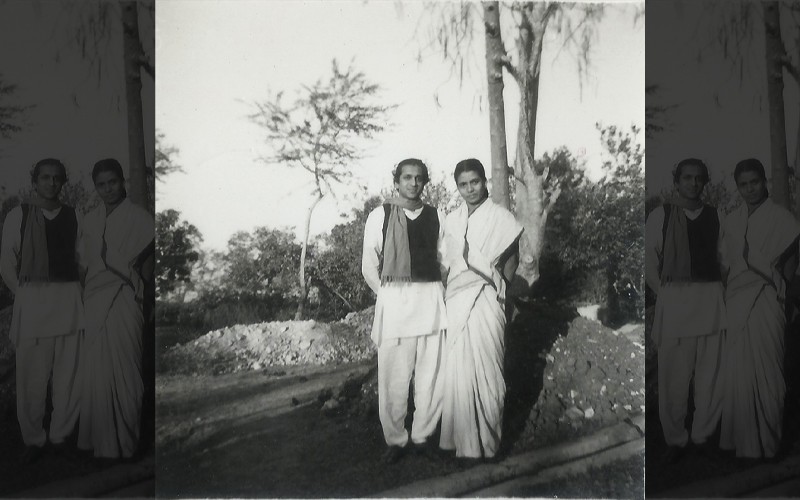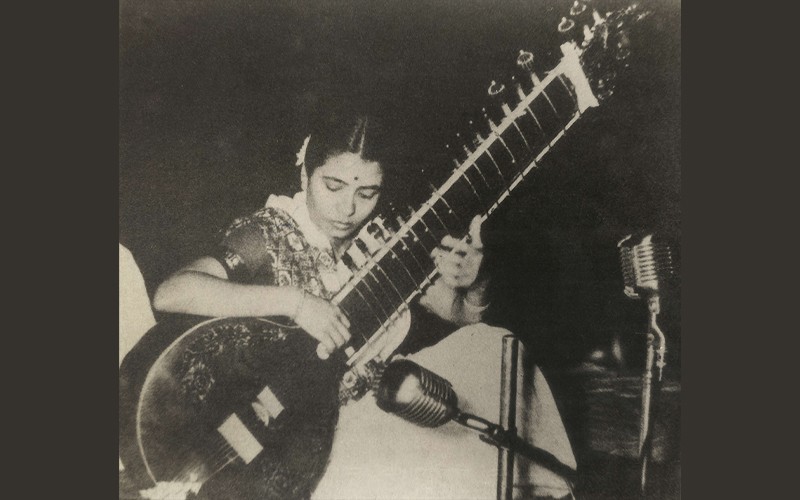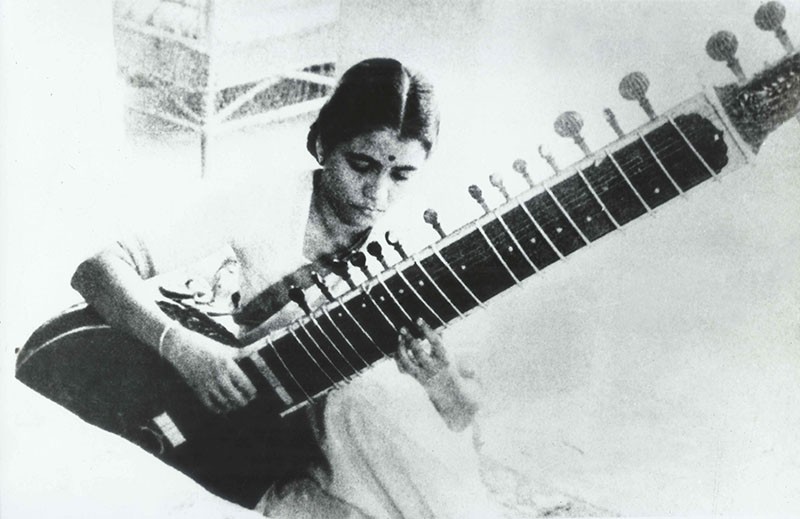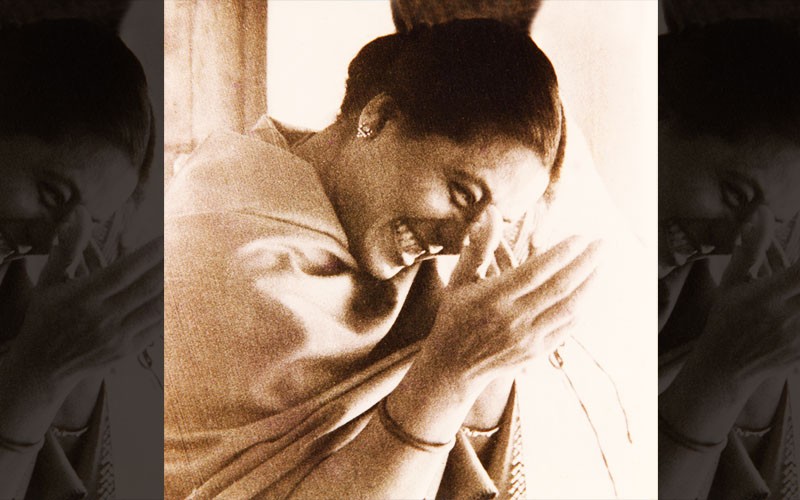Annapurna Devi: An absent protagonist
Annapurna Devi, daughter of Ustad ‘baba’ Allauddin Khan, was a legendary figure in the music world even during her lifetime as she stopped performing at the prime of her creative genius. Award-winning filmmaker Nirmal Chander’s documentary 6A Akash Ganga throws light on her enigmatic personality, her tremendous contribution to Indian classical music and the story of love, sacrifice and betrayal, writes Shoma A. Chatterji
6A Akash Ganga is a tribute to a great musician who by choice withdrew from public performances but nurtured other great Indian classical musicians like Pt Hariprasad Chaurasia, Pt Nikhil Banerjee, Pt Nityanand Haldipur as a guru. She was Annapurna Devi.
The film has bagged the Silver Conch for Best Documentary, National Competition, MIFF 2024 and also the Ram Bahadur Trophy for Best Documentary, FSA, Kathmandu 2024.
This is not filmmaker Nirmal Chander’s first film on Annapurna Devi. In 2019, he made another documentary called Guru Maa on her.
Says Chander, “The Sangeet Natak Akademi had approached me in 2017 if I could do a film on Annapurna Devi. But things were not working out so I reached out to the Annapurna Devi Foundation and her disciple Pt Nityanand Haldipur, the noted flautist, who manages the foundation. He convinced ‘Maa’(Annapurna Devi) to do this film but she agreed only to let me into the house but not to meet her in person. I saw it as an interesting creative challenge with all the myths around her.”
6A Akash Ganga has been made possible mainly because of the open-mindedness of Haldipur, who defines the main narrative thread, he says.

The film details how it took many years for Haldipur to get her to accept him as a pupil. “She taught me that I had really not learnt anything about music, what riyaaz means and how I needed to relearn everything from scratch,” he says. It goes on to show as Haldipur performed her final rites following her demise at the ripe old age of 91 in 2013.
“For the uninitiated, Annapurna Devi was the first wife of Pandit Ravi Shankar, the eminent sitarist whose name is familiar with every music lover across the world. But the marriage broke down though Annapurna Devi tried her best to save the crumbling marriage by completely stopping to perform on the surbahar in public because, even she learnt over time that she was the more talented instrumentalist between the two,” observes Chander.
The film relates how after a particular jugal bandi performed in public, Panditji was so angry with the audience’s applause for Annapurna Devi’s performance that when the function was over, he angrily threw the sitar and expressed his anger quite publicly. This incident perhaps finally led to Annapurna Devi’s decision to withdraw from any public performance forever. But in keeping with her dignified personality, she did not once refer to Pandit Ravi Shankar’s several affairs and marriages in the journey of his life.
“Maestros have waited for years for her to accept them as disciples. George Harrison, of the Beatles fame, had to seek special permission to listen to her musical practice. But in the mid-1950s, she vowed not to perform for anyone in an effort to save her crumbling marriage to the world-renowned Indian musician,” he adds.
The film throws up a challenge to the audience too who must watch the life story where the protagonist is missing from the visual landscape.

Says the director, “It was such a challenge to make this film that the process of making it will remain with me forever. I wanted 6-A Akash Ganga to focus on her as a guru, as a mother, as a wife and as a woman as well as explore the guru-shishya relationship. There was this lovely atmosphere in the house, which is why the film is named after the house she lived in. We also have never-heard of materials on her; so a lot of things are completely new.”
“The big story about Ravi Shankar and her life is also part of the film but the final thing for me was what she did with it; how she still gave back so much to the music world. Though she didn’t perform, she became this great guru.”
The film opens with Nityanand Haldipur welcoming the film director and crew into the flat informing them that though they are most welcome they cannot enter the room where Annapurna Devi lives, eats sparsely and teaches one student at a time, trying to instill in them how music is a God they need to worship and dedicate their lives to.
The film also gives a glimpse of old video clips of a smiling Pandit Rooshikumar Pandya, her disciple, who Annapurna Devi married in 1982 after being pursued for a long time but she did not allow him to step into her room. But he accepted all that and took very good care of her health and financial needs till he passed away.
Chander makes ample use of old photographs, handwritten letters, a diary and childish drawings done by their only son Shubhendra Shankar or Subho who died of pneumonia in the US in 1992.

The photographs cover the evolution of Annapurna Devi from the time she was a little child, followed by practicing the surbahar under her father and guru, Ustad Alauddin Khan of Maihar Gharana and keeps on repeating that her best memories are when she took lessons from and performed in front of her ‘Baba.’
There are also pictures of Annapurna Devi with her elder brother sarod wizard Ustad Ali Akbar Khan who encouraged her in her music and also acknowledged her talent both as a practitioner as well as a guru in the Maihar school of Hindustani classical music. One can also see around six covered sitars and surbahars lined up against one wall of the entrance corridor.
We never get to see her but we do hear her voice, tired with age, where she speaks in Bengali to someone off screen and expresses her feelings about how the person she loved and dedicated her life to had betrayed her, referring to Pandit Ravi Shankar.

Chander who was both astounded and thrilled at the very process of shooting the film in extremely confined spaces, adds, “There is hardly any material available on YouTube; the little that is available, is badly recorded and is without her permission. People will agree or disagree but the effort was to not make a film on hearsay. What you will see recorded is the final 80 minutes of a journey. But so much is outside it, where one is just sitting quietly in her house, facing the Arabian Sea and the breeze hits you."
"These quiet moments when she’s inside the room not meeting you is what helps shape the film,” says Nirmal.
Images courtesy Nirmal Chander
IBNS
Senior Staff Reporter at Northeast Herald, covering news from Tripura and Northeast India.
Related Articles

No compromises, ultra-slim: Motorola Edge 70 launches with triple 50MP cameras and AI power
Motorola on Monday launched its thinnest smartphone yet, the motorola edge 70, positioning it as an ultra-slim device without compromises on performance, battery life, cameras, or durability.

91-year-old Ruskin Bond hospitalised! Health now stable, fans can breathe easy
Dehradun/IBNS: Celebrated Indian author Ruskin Bond’s health has stabilised following his hospital admission in Dehradun last Saturday due to a leg problem, media reports said.

From English to Hindi and beyond: Google Gemini makes translations smarter than ever
Internet search giant Google has announced the rollout of a state-of-the-art text translation feature in Search and the Translate app, powered by its Gemini AI.

Kolkata: ICCR hosts 10th anniversary celebration of Robir Kiran
The Satyajit Ray Auditorium at Kolkata’s ICCR resonated with music and celebration as Robir Kiran marked its grand 10th anniversary.
Latest News

1996 World Cup hero Arjuna Ranatunga faces arrest in oil scam probe

Chinese billionaire with over 100 US-born kids dreams of marrying his children into Elon Musk's family

Horror on Yamuna Expressway: 8 buses, 3 cars pile up in dense fog, 4 dead, 25 injured

Canada announces nearly $7M for energy modelling and innovation projects

